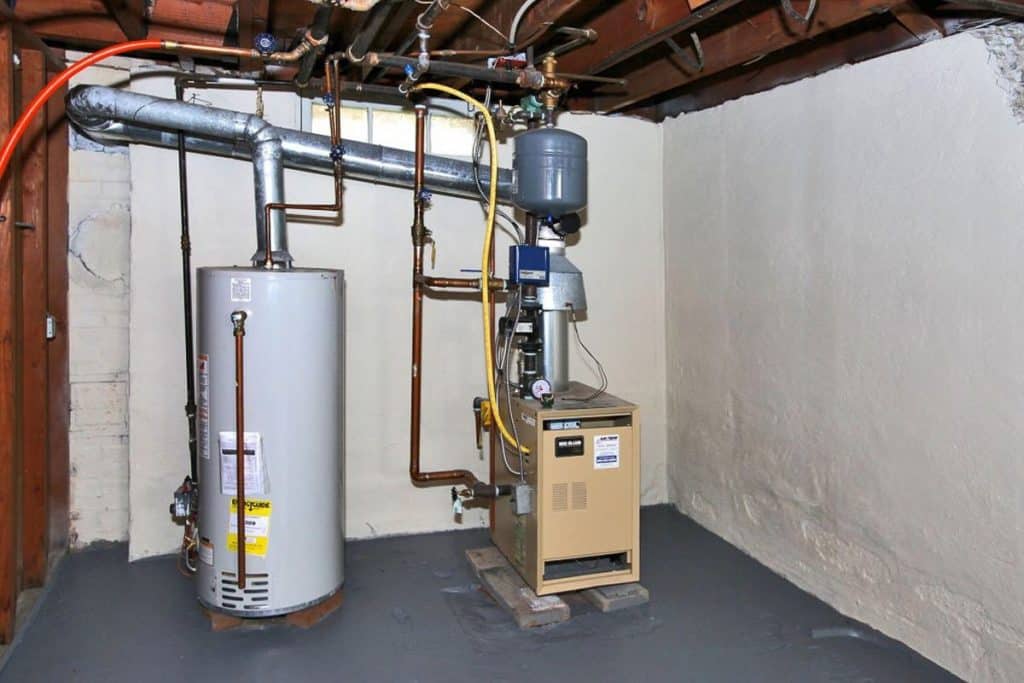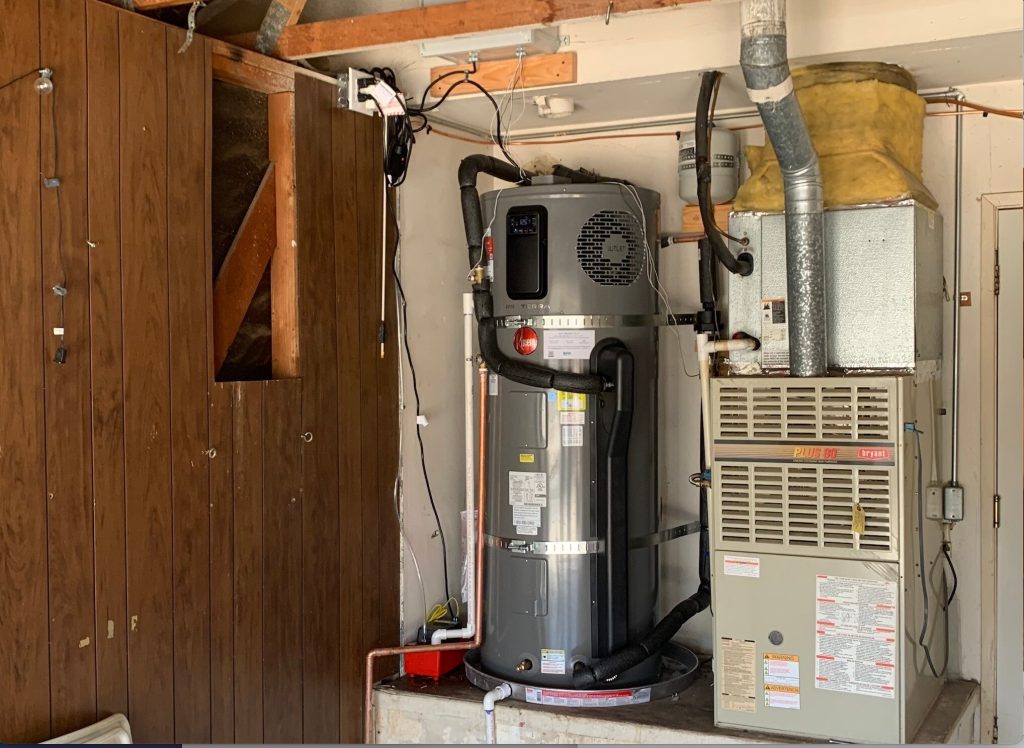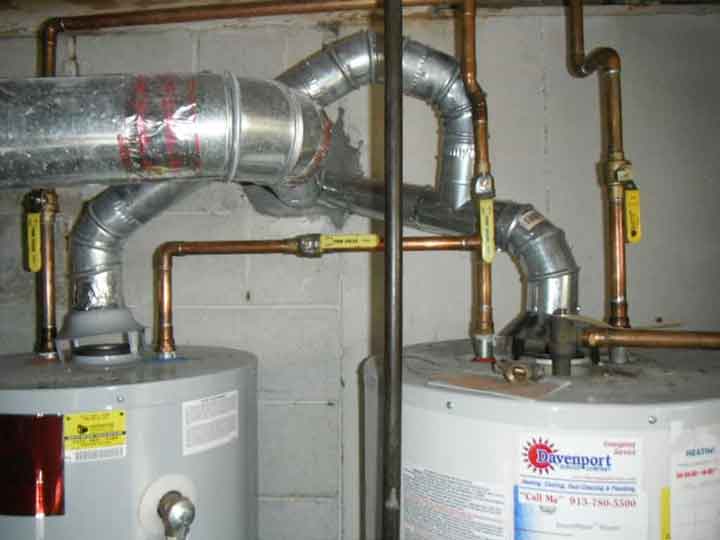During the cold season, we all appreciate the luxury of hot water for various household needs, such as washing dishes, doing laundry, and taking showers. But have you ever wondered about the inner workings of your water heater? In this article, we will explore the connection between water heaters and furnaces, examine how water heaters function, and discuss the potential cost implications of replacing these vital appliances.
Understanding How Water Heaters Work
In the majority of homes, traditional water heaters are the go-to choice for heating water. These heaters operate in two primary ways: direct water heating and indirect water heating. Let’s delve deeper into the mechanics of these two systems.

Direct Water Heating
Traditional water heaters are typically large metal cylinders with two pipes at the top. One of these pipes directs cold water into the tank, where it flows to the bottom. Here, it is heated by the energy source, which can be electricity, gas, oil, or propane, contained within the tank.
As the water inside the tank heats up, it rises to the top of the tank and exits through the second pipe, eventually flowing to a faucet that dispenses hot water when opened. Here’s a breakdown of how electric and gas water heaters operate when directly heating water:
Electric Water Heater: Inside the tank, electric elements heat the cold water entering the system. The hot water rises to the top of the heater, and a pipe directs it to various outlets in the home, like taps, showers, and faucets.
Gas Water Heater: Gas water heaters employ a similar principle as their electric counterparts but use gas burners to generate hot air. This hot air rises through a chimney located in the center of the tank, heating the surrounding water. The outlet pipe from this system connects to the water piping, ultimately delivering hot water to faucets when needed.
Indirect Water Heating
Indirect water heaters differ from direct water heaters in that the heating mechanism is external to the tank. In this setup, water is heated in a furnace or boiler, which has a pipe connecting it to a heat exchanger located within the water heater or storage tank. This heat exchanger is responsible for warming the water inside the water heater.
Furnaces and boilers can utilize various energy sources, including electricity, gas, propane, or oil, to heat the water through this indirect process.
The Ideal Clearance Between Water Heaters And Furnaces
The clearance around your furnace is a crucial factor to consider. To facilitate easy access for maintenance and potential replacements, building codes typically require at least 30 inches of clear space around the furnace. Furnaces require adequate air supply for combustion, and the room housing the furnace should not be too small. Proper ventilation is also vital.

In some cases, building codes might dictate that the electrical disconnect switch and gas line shutoff valve should be located in the same room as the furnace. Moreover, codes may recommend that the electrical shut-off should be an actual switch rather than a cord plugged into an outlet. It’s essential to keep the area around your furnace free from flammable items and substances to maintain safety.
Water Heaters And Home Heating
Your water heater can serve a dual purpose by not only providing hot water but also heating your home. However, this option is most effective in climates that are not excessively cold and when your home is well-sealed and insulated. Achieving this setup typically involves using a combination boiler, a single unit capable of heating water and your home simultaneously.
The combination boiler allows you to control the temperature for both hot water and home heating. If the temperature falls below the set point, the thermostat signals the boiler to increase the heat. Once the desired temperature is reached, the boiler modulates to maintain it, thus saving energy.
This system does not simultaneously heat your home and your water; it prioritizes one over the other. When you turn on hot water, the valve within the boiler directs the heat to the hot water supply system. Once the tap is turned off, the valve redirects the heat back to the central heating system, providing warmth to your home.
Does A Water Heater Emit Heat?
To heat both your tap water and home, you’ll need a combination water heater. The advantages of this system include:
Instant Hot Water: You no longer need to store hot water; it’s heated as soon as you open the hot tap.
Space-Saving: You won’t require extra space for hot water cylinders since they’re no longer necessary. Hot water is instantly generated as it flows from your taps.
Compact Size: Modern combination boilers are more space-efficient and can be installed in inconspicuous locations, such as cupboards.
Efficiency: Manufacturers have improved the efficiency of these systems, transitioning from G-rated models to A-rated ones, which helps you save on energy bills.
Cost Savings: Installing this type of system is typically more cost-effective than traditional boiler setups because it doesn’t require an additional tank.
The Cost Of Replacing A Furnace And Water Heater
The expenses associated with installing or replacing a furnace and water heater can vary significantly depending on factors such as the type of system and necessary repairs. Here’s a general overview of the costs involved:

- Installing a gas water heater usually ranges from $250 to $700, with an average hourly installation cost of around $80.
- For an electric water heater, you can expect to pay between $1,100 and $2,100.
- Switching from an electric to an LPG (liquefied petroleum gas) hot water heater, which is often more cost-efficient to run, may cost between $1,200 and $3,000.
- Replacing a furnace can cost between $2,000 and $7,000, with extreme cases reaching up to $40,000.
Here’s a breakdown of furnace replacement costs for various types of systems:
- Replacing a gas furnace can range from $3,800 to $10,000.
- Replacing an electric furnace may cost between $2,000 and $7,000.
- Replacing an oil furnace typically ranges from $6,750 to $10,000.
To get a clear estimate of the expenses involved, it’s advisable to obtain quotes from multiple contractors. This will help you find the most affordable yet quality service that aligns with your budget.
In Conclusion
Traditional water heaters, whether they operate directly or indirectly, are commonplace in many households. However, for those who seek a more versatile solution that can heat both water and their homes, a combination boiler offers an effective and efficient alternative.
The cost of installing or replacing a furnace and water heater can vary widely, so it’s essential to gather multiple quotes to ensure you receive the best value for your investment while meeting your specific needs. Ultimately, the interconnection between water heaters and furnaces plays a vital role in maintaining comfort and convenience within our homes.






GIPHY App Key not set. Please check settings